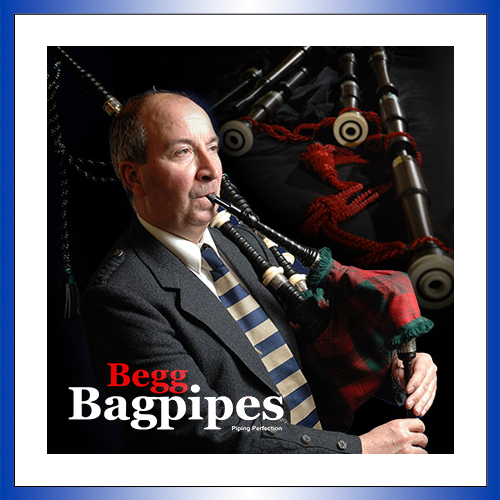By Thomas Pearston

The photograph of four chanters, below, is a confirmation of the rise in pitch over the past 50 years. Chanter A is a chanter from the First World War, B is about the early 1940s and C is a modern chanter as played to-day. D is a pre-war [the second – Editor] half-sized chanter.
When played on the same reed, chanters A and B were sharp on the top hand, especially high G. Chanters C and D were much closer in pitch and loudness. The late Pipe Major Willie Gray was the first to bring attention to pipers that the pipe chanter was becoming like a half sized chanter. Today, the modern pipe chanter is high pitched and universally made so by most bagpipe makers. Perhaps with more indoor playing than ever before, and the fact that the most important bagpipe competitions are held indoors, the decrease in volume and rise in pitch has crept up on us.

Rise in pitch has been occurring in other instruments and even among singers themselves. In the Kilberry Book [of Ceol Mor], published in 1948, it states that the bagpipe is now essentially the same instrument that it was in the beginning of the 17th century. Today, I do not think this can be held to be correct. The higher pitched chanter would have been rejected by all the old masters. In essence the core sound of the pipe is the pipe chanter and like the rest of the instrument and the music itself has come to us out of the mist but I believe that whoever invented ceòl mòr invented the pipe chanter. It cannot, therefore, be the vehicle to produce ceòl mòr that it was.
On the face of it, the higher pitched chanter may be pleasing the bagpipe makers, the players and the listeners but what would the old masters have said about this? I believe they would have said that the art of piping has changed dramatically; the loudness has changed and the performance of the embellishments so that the instrument has become more suitable for a dance band.

If the old masters had wished to play on a high pitched instrument there was nothing to keep them back except their ear. If the music goes in tandem with the instrument then the balance has been changed for the first time in hundreds of years. We still have in our memory the great bagpipes of Willie Ross and Robert Reid and even a few months ago we heard an old record of Red Hector of The Battles by Roderick MacDonald, which to me gave a much truer sound than that of the modern bagpipe.
The common fault of the pre-war chanters were sharp high G’s and D’s and flattish bottom hand but the modern chanter has also problems, especially low G. Archie MacNeill, the blind piper, advised lowering the pitch of the pipe chanter for the MacNeill Pipe Band and this caused a minor sensation by the new sound that was produced. Sadly, the band broke up shortly after. Perhaps we should have another look at the modern chanter with the help of more scientific instruments and seek more satisfactory answers than we have at present. Perhaps an investment for research of £25,000 would give us some answers.
• From the July 1988 Piping Times.


